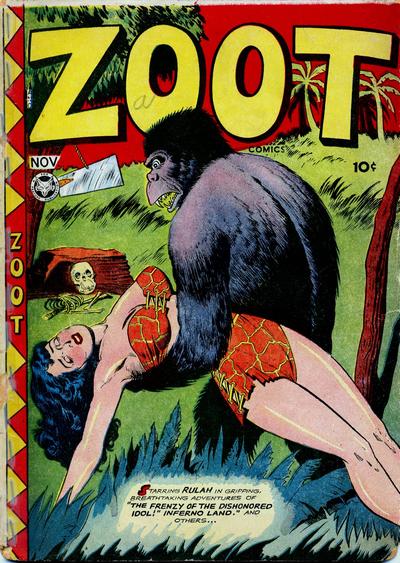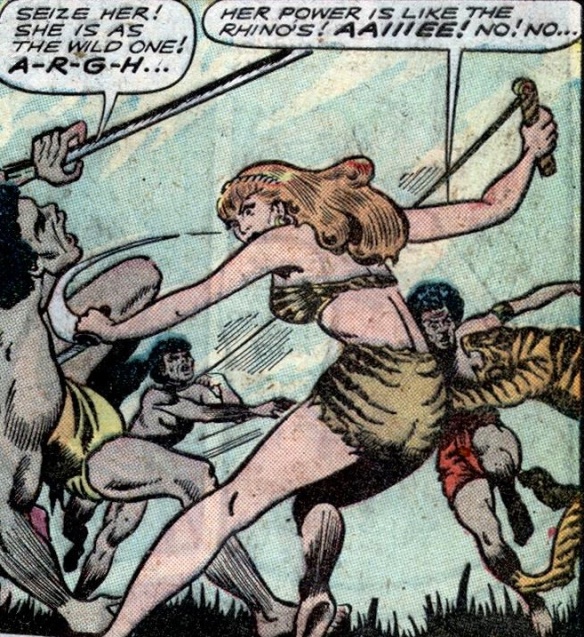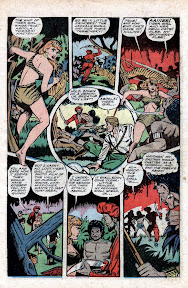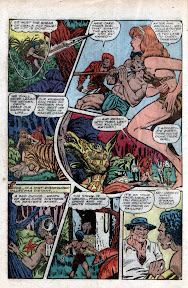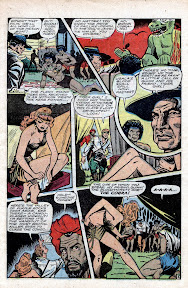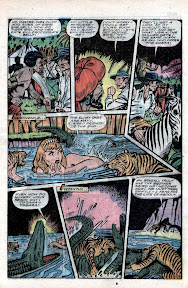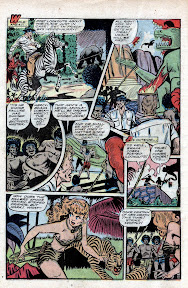Rulah was created by Matt Baker, the greatest “good-girl” artist of the Golden Age. Perhaps because the character was under the aegis of the sensationalistic Fox Publications, however, Rulah was a bit seedier than such Baker characters as Sky Girl.
Today’s story, for example, breaks just about every notion of propriety a modern audience could conceive. There are startling instances of racism mixed in with a surfeit of good girl shots, bondage and – if one were inclined to think along the lines of noted Rulah hater Frederic Wertham – hints of bestiality.
That said, there’s still something undeniably entertaining about “The Frenzy Of The Dishonored Idol.” Forbidden fruit, perhaps? However, I can’t help but wonder how Baker, an African-American pioneer in the comics field, felt about portraying Africans in such an unflattering matter.
“The Frenzy Of The Dishonored Idol” originally ran in Zoot Comics #10 (Fox, November 1947). Grand Comics Database identifies Baker as the the story’s artist, although the cover image shown at the beginning of the post is credited to Jack Kamen.
“Punish the woman as you see fit.” Golden Age justice!

